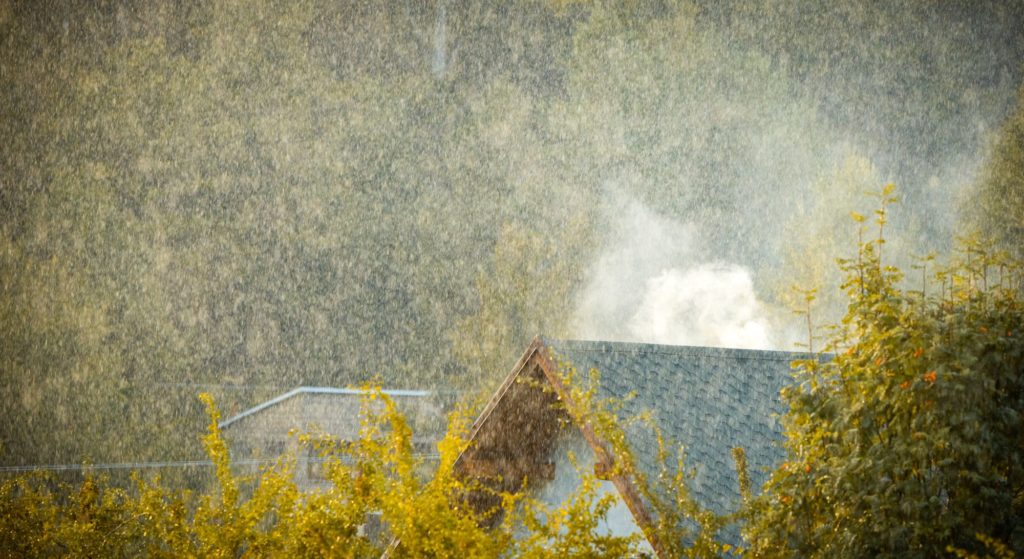When rainy weather arrives, your roof is one of your home’s most important defenses. Making sure your roof is in good condition before the rain starts can save you from costly water damage, leaks, and other issues. Here are some key steps for inspecting and maintaining your roof to keep it in top shape and ready for whatever the weather brings.
1. Inspect Your Attic for Existing Leaks or Moisture
Before looking at the exterior of your roof, it can be helpful to start your inspection inside. Check inside your attic for any signs of leaks, moisture, or water damage stains on the ceiling or walls. You should also keep an eye out for mold, which can indicate a long-standing moisture issue.
If you find any leaks or moisture problems, locate the source of the problem and repair it as soon as possible. Adding insulation to your attic can also help prevent future moisture issues by regulating the temperature and reducing condensation.

2. Look for Signs of Sagging or Structural Damage
In addition to visible water damage, check for sagging areas on your roof or inside your attic. Sagging spots could indicate structural damage. This may result from water pooling on the roof or underlying problems with the roof’s support system. Sagging is a major red flag and requires immediate attention.
If you spot any sagging or dips in your roof, contact a roofing professional to assess the damage and make necessary repairs before the problem worsens.
3. Check for Missing or Damaged Shingles
Missing or damaged shingles are often the first sign of trouble on a roof’s exterior. Shingles protect the underlying layers of your roof from moisture, and when they’re missing, cracked, or curling, water can seep in. During your inspection, look for any areas where shingles appear to be worn or absent.
If you notice any issues, have the damaged shingles replaced as soon as possible. It’s a simple repair that can prevent larger problems down the road.
4. Inspect Flashing and Seals
Flashing is the metal or vinyl material used around chimneys, vents, skylights, and other roof penetrations to prevent water from leaking into your home. As time passes, it’s possible for flashing to become loose, corroded, or damaged, which might lead to leaks.
Check the flashing for any signs of wear or gaps, and reseal or replace if needed.
5. Clean Gutters and Downspouts
Clogged gutters and downspouts can lead to water backing up and pooling on your roof, which increases the risk of leaks or water damage. Leaves, twigs, and debris can block the proper flow of water, especially during rainy seasons.
Clean your gutters and downspouts on a regular basis to give the rainwater a clear path away from your home. You might also want to consider installing gutter guards to reduce debris buildup and make cleaning easier.
6. Trim Overhanging Branches
Trees that hang over your roof can pose a serious risk during storms. Low-hanging branches might scrape against the roof and damage shingles, or fall during strong winds and potentially cause greater harm. Overhanging branches can also drop leaves and debris on the roof, which can clog gutters and retain moisture.
Regularly trim any branches that hang over your roof to prevent damage and keep your roof free from debris.
7. Schedule Regular Professional Inspections
While you can handle basic roof maintenance yourself, it’s a good idea to have your roof professionally inspected every few years—especially before long periods of rainy weather. A trained roofing contractor can spot potential problems that might not be obvious to homeowners.
Hire a licensed roofing professional in your area to inspect your roof for hidden issues such as leaks, structural damage, or worn materials. Regular inspections and maintenance help extend the life of your roof and prevent unexpected repairs.
A little roof maintenance goes a long way in protecting your home from the damage caused by rain and storms. By addressing issues early, you can keep your roof in excellent condition and prevent expensive repairs. If you wait until you see rain in the forecast, it might be too late!